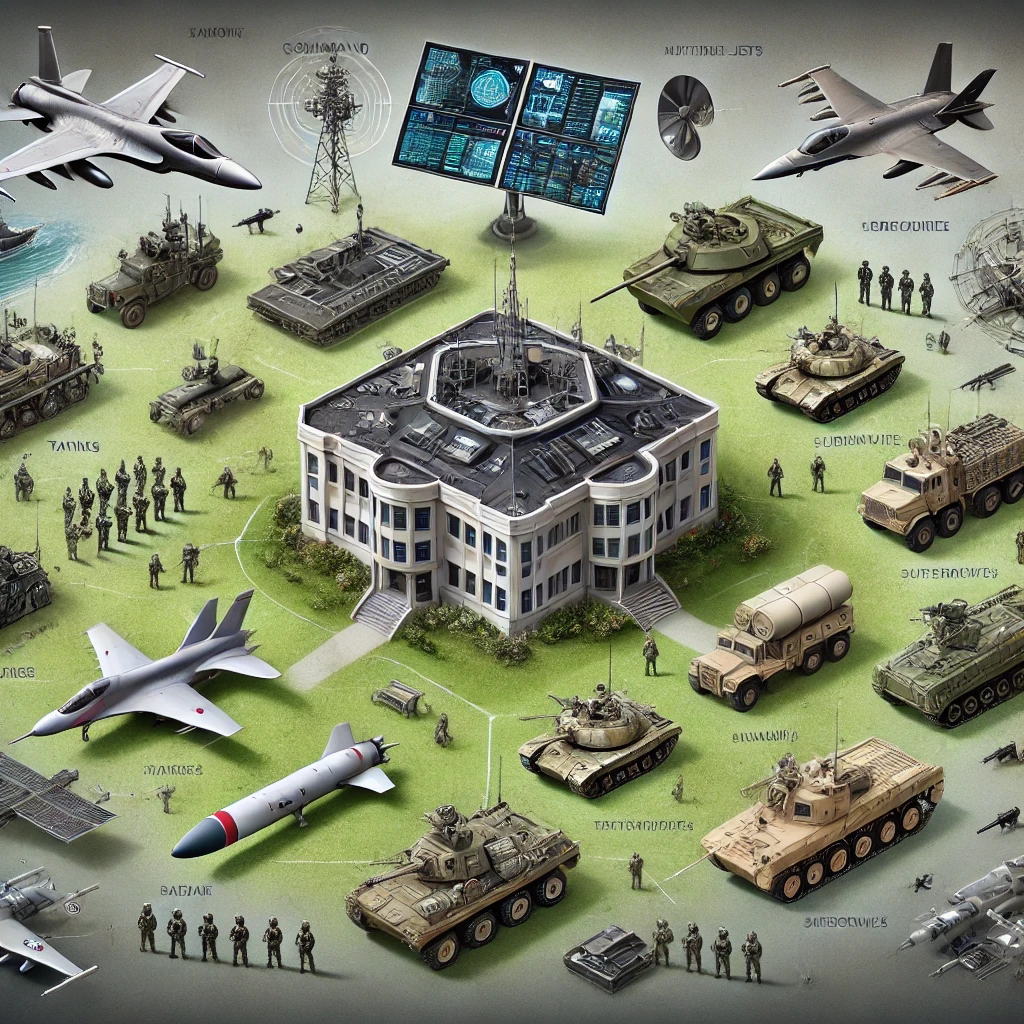Understanding Battlefield Transparency: Components and Integration in Modern Warfare
In the ever-evolving landscape of warfare, battlefield transparency has emerged as a vital concept for gaining a tactical edge. Simply put, it refers to the ability to gather real-time information from the battlefield, process it effectively, and distribute it to the right channels for decision-making. This comprehensive view reduces uncertainties and enables informed actions. Modern warfare no longer revolves around just boots on the ground; it’s about the flow of data, and the technology that facilitates this transparency is the true game changer.
In this blog post, we’ll dive deep into the components and sensors required to achieve battlefield transparency and how these systems are connected to form a cohesive network. We’ll also explore how this network aids modern militaries in maintaining dominance on the battlefield.
---
Key Components and Sensors for Battlefield Transparency
To achieve battlefield transparency, militaries rely on a variety of advanced sensors and technologies, each playing a unique role in providing situational awareness. Below are some of the most important components that contribute to a real-time, transparent battlefield:
1. Satellites Satellites are the backbone of battlefield transparency. These high-tech machines provide overhead surveillance, capturing vast amounts of imagery and data, including troop movements, vehicle positions, and even weather patterns. They help create a bird's-eye view of the battlefield.
2. Unmanned Aerial Vehicles (UAVs) Drones have revolutionized modern warfare, providing real-time, close-range surveillance of the battlefield. These UAVs are equipped with cameras, thermal sensors, and radars, giving military forces the ability to gather data without risking lives.
3. Radars Radar systems are critical for tracking both friendly and enemy forces. They provide accurate information on aerial and ground movements, helping in targeting and tactical positioning.
4. Thermal and Infrared Sensors Thermal imaging and infrared sensors allow for the detection of enemy troops and equipment, even in challenging environments like night-time operations or smoke-covered battlefields.
5. Electronic Warfare (EW) Systems Electronic warfare systems are responsible for jamming, intercepting, or manipulating enemy communications and radars. They also help protect friendly forces by disrupting incoming threats, such as missiles or UAVs.
6. Command and Control Centers Command and control centers act as the heart of battlefield transparency. All the data collected from various sensors and systems is funneled into these centers, where it is processed, analyzed, and used to guide military decisions.
7. Artificial Intelligence (AI) and Big Data Analytics AI plays an integral role in filtering and analyzing the massive amounts of data gathered from various sensors. Algorithms can identify patterns, predict enemy movements, and provide actionable insights faster than any human analyst could.
---
How These Components Are Connected
In order to effectively utilize these diverse sensors and components, they must be connected through a seamless, secure network that allows data to flow quickly and accurately. This network is a combination of communication satellites, secure radio frequencies, and ground-based systems, all working together to create a unified command structure.
Here’s a simplified breakdown of how the components are integrated:
1. Data Collection: Satellites, UAVs, radars, and other sensors collect data on troop movements, environmental conditions, and enemy positions. These systems constantly feed information to the network.
2. Data Transmission: The collected data is sent to a central hub—typically a command and control center—via secure communication channels, such as satellite links or encrypted radio frequencies. Ensuring that the data is transmitted securely and without delay is crucial in maintaining transparency.
3. Data Processing and Analysis: Once the data reaches the command center, AI algorithms and data analytics tools come into play. The data is cleaned, analyzed, and presented in a way that allows commanders to make quick decisions. Predictive analytics can also forecast enemy moves based on historical data and current battlefield conditions.
4. Distribution of Information: The processed data is then relayed back to the frontline units, often in the form of actionable intelligence. This enables soldiers, pilots, and commanders to respond in real time to emerging threats and opportunities.
---
Diagram 1: Components of Battlefield Transparency
[Insert Diagram 1: A visual representation showing satellites, drones, radars, thermal sensors, command centers, and AI systems. Each component should be connected to show how they work together to gather and process data.]
---
Diagram 2: Network Integration for Battlefield Transparency
[Insert Diagram 2: A diagram illustrating how various sensors, communication satellites, and command centers are connected. Show how data flows from sensors to command centers, is processed by AI, and is then sent back to field units.]
---
Conclusion
In modern warfare, battlefield transparency is the difference between success and failure. It provides military forces with a clear, real-time view of the battlefield, enabling better decision-making and reducing risks. By integrating technologies like satellites, UAVs, thermal sensors, AI, and more, military forces can gain an unmatched tactical advantage.
As technology continues to advance, so too will the capabilities of battlefield transparency, ensuring that future conflicts will be as much about data as they are about firepower. Understanding these systems is crucial not just for defense professionals, but for anyone interested in how modern militaries operate in today’s complex world.
---
With this comprehensive overview, you now have a clearer picture of the components and the technology driving battlefield transparency, and how they are revolutionizing modern warfare.


Comments
Post a Comment